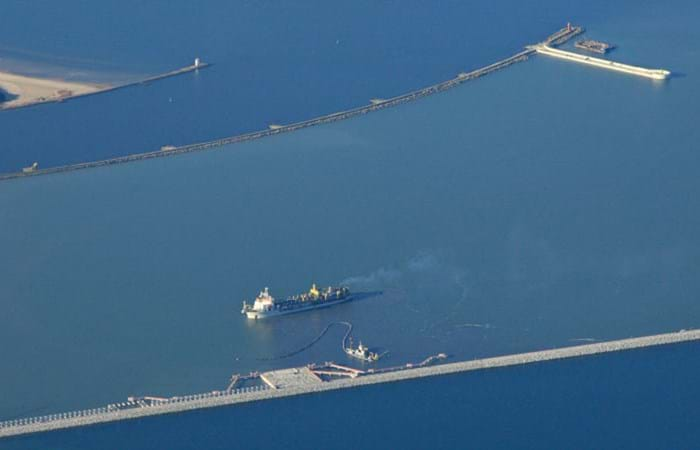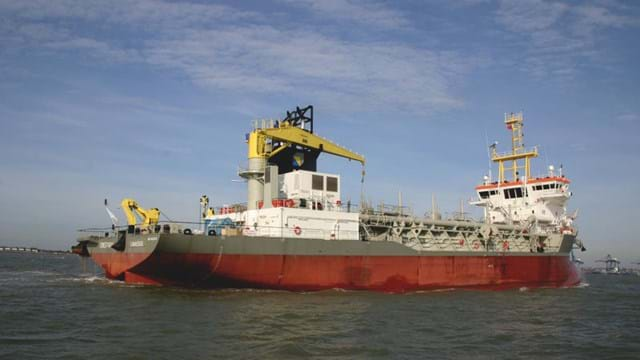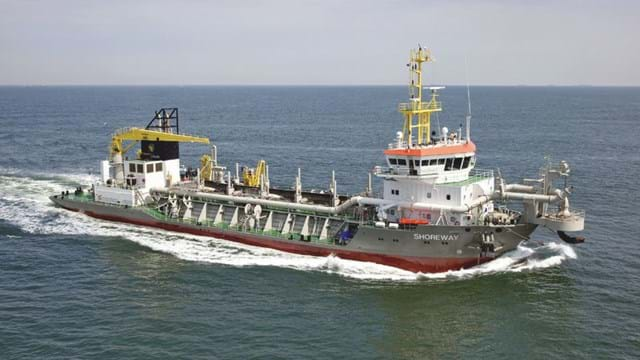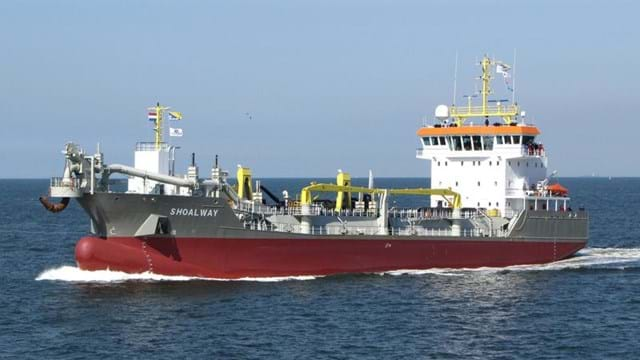The protective breakwater for Swinoujscie External Port comprises a 3 km long breakwater and groyne for a new outer harbor construction to facilitate a LNG tanker berth and other related activities in the Baltic Sea. The construction of the breakwater took 2 ½ years and was completed in December 2012. Boskalis International B.V. was the leader of a consortium consisting of Boskalis International B.V., Hochtief, Aarsleff and Doraco.
The project consists of the following distinctive elements:
- Dredging of access channel and turning basin;
- Ordnance removal;
- Rock works for breakwater and groyne construction;
- Civil works for breakwater and groyne construction.
Dredging works
An access channel and turning basin were dredged to a depth of -14.50m. Dredging started in August 2011 and was completed by January 2013, with a total volume of 8.2 million m3 sand being removed by the Trailing Suction Hopper Dredgers (TSHD) Crestway, Shoreway, Shoalway and Barent Zanen.



